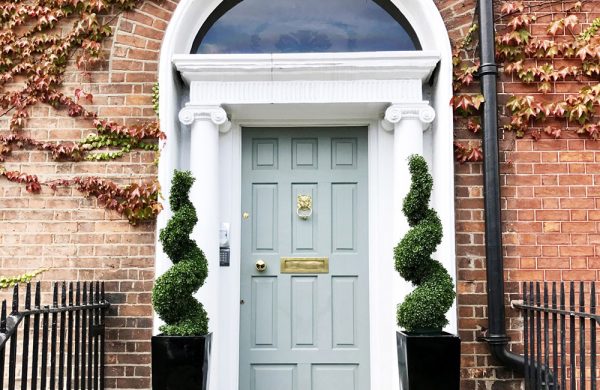
Ask most people to describe their dream home and the answer may well be ‘Period’.
These are truly beautiful buildings: the Georgian, with their grand reception rooms and elegant symmetary lines; or Victorian with their beautiful cornicing & attractive bay windows. But are they really suitable for how we we want to live today and more importantly can they be successfully adapted?
Many period homes are designed over several levels so getting them to work in the more sociable all inclusive style that is becoming the norm can be very challenging. By simply adding a large extension to the rear of the property to create an open-plan family space, you may well end up cutting off the main house from the new addition.

I remember visiting a lovely victorian villa in Dalkey a few years ago that had been refurbished and extended. After being walked through the original part of the house to the large open plan family, kitchen, dining and living space to the rear, the home owners greeted me with ‘welcome to the one-bed’. This was the only area of the house that they lived in. The existing period reception rooms were almost never used and over time had become nothing more than storage spaces.
In larger period homes the kitchens are often in the basement or lower ground floor of the houses making them the darkest spaces and totally isolated from the main living accommodation. By expanding the lower ground floor level you risk isolating the main reception rooms above altogether. In fact in many cases homeowners enter and exit their home through the basement level meaning even the front door and entrance hall becomes totally redundant.
Today the idea of a spare or ‘good room’ is not one that people are keen on. In the past many homes had a room that was saved for guests – a formal dining room, or extra living space perhaps. People expect their homes to work and run efficiently now, so the idea of an unused room seems pretty impractical.

At the same time we’re seeing a desire to have a quiet room away from the busy open-plan spaces in the rest of our homes. These rooms are informal areas, however – a place to relax, read or watch TV – rather than somewhere to entertain only on special occasions. So how do you get these homes that were designed for a different time to work more efficiently?
Do respect the character of the original house. In the 80’s there was a tendency to rip out existing features to make way for a more modern look. Today, thankfully, a more considered approach is the norm. It’s important to respect the character of the original house. Try to preserve or reinstate original features but this doesn’t mean that you have to compromise on contemporary style and functionality. And respecting the character and history of the house doesn’t meant that you have to replicate a period style in the new addition. In fact a contemporary addition can be a much better fit. Even in homes that are planning-protected, a contemporary addition can be favorably viewed by the planning authorities.
Don’t be afraid to move things around. Rather than having your kitchen in the basement, for example, consider moving it up the the upper ground floor and connecting with the reception rooms at that level. This way you will not only be more inclined to use the reception rooms but you will be gaining much more light in the heart of the home, and have a bright inviting family zone off the main hallway. The lower ground or basement rooms could then be used for things like laundry, utility and den or play areas.
Period homes can often be long and narrow in their footprint, so extending makes the centre of the house vulnerable to becoming very dark. Try to design ways to get light into these spaces – things like rooflights or internal courtyards work really well and create striking features in a home.
Often bedrooms are not very large in period houses. You’ll find that there are one or two large rooms at the most and then a series of smaller bedrooms. There also tend to be features like fireplaces in bedrooms that can have an impact on how to get sufficient wardrobe space. Try to plan your storage well, make the most of each room regardless of its size by opting for bespoke solutions if your budget allows. This way you can tailor your wardrobes to fit your requirements exactly and still be able to respect and express any special features like fireplaces or cornicing in the room.
Don’t feel that you need to cram en-suites in everywhere. Often in a period home this will have a negative impact on the character of the rooms. It’s far better to sacrifice one small bedroom to be used as an en-suite for the master bedroom and then create a good sized family bathroom with space for a bath and shower.